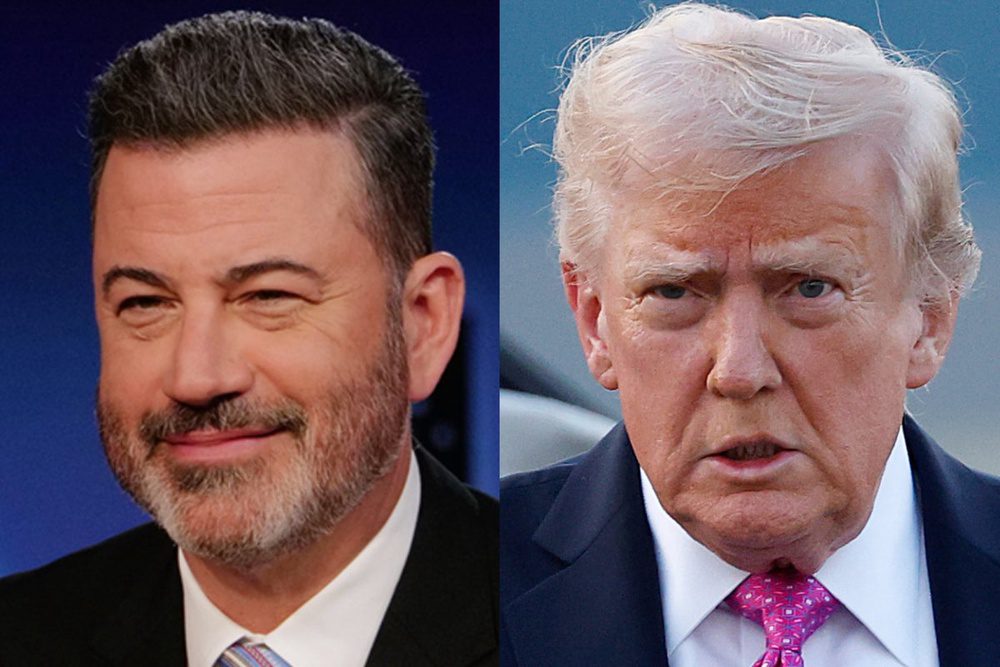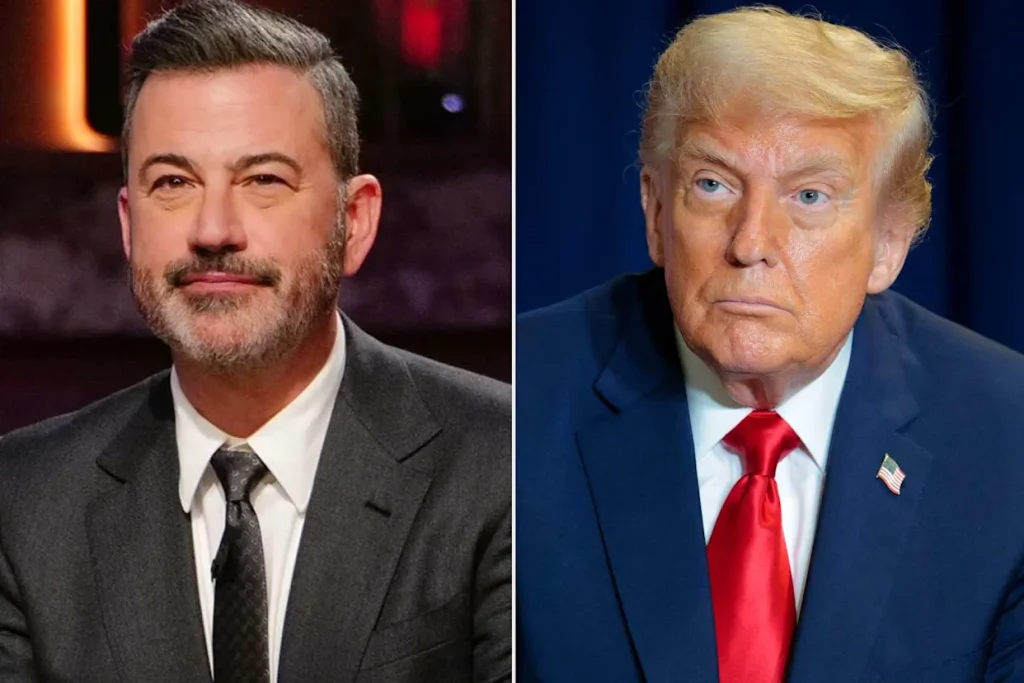“I Hope He Doesn’t See This”: Jimmy Kimmel Jokes About New Poll Ranking Him Above Donald Trump — and the Former President Fires Back
The joke practically wrote itself, and Jimmy Kimmel knew it. As the late-night host looked into the camera to address a newly released poll comparing his popularity to Donald Trump’s, he wore the same half-smile viewers have come to expect on nights when the news hands him a perfect setup. “I hope he doesn’t see this,” he quipped, a line that sounded equal parts tease and public service announcement. It was the kind of moment that captures how American pop culture and politics keep colliding — a comedian working his beat, a former president looming over the punchline, and a poll that, at least for a news cycle, links them in the same sentence.
Kimmel didn’t linger on numbers because the numbers aren’t the heart of the story. What mattered was the rhythm of it all: a late-night monologue built on a fresh data point, followed by the expectation that Donald Trump would respond. And he did, pushing back in familiar fashion, questioning any measure that puts him behind and nudging the conversation to an arena he prefers — ratings, crowds, and enthusiasm. It was vintage Trump, framing the exchange as a contest he still believes he wins, and it was vintage Kimmel, holding the moment up to the light and finding the laugh inside it.

The two men have circled each other for years, sometimes with pointed barbs and sometimes with pure showmanship. Kimmel’s audience knows he doesn’t shy away from Trump material; he threads it through his monologues with a mix of exasperation and mischief. Trump, for his part, often treats late-night hosts as both critics and foils, dismissing them while also amplifying their clips by reacting to them. That feedback loop is the modern media ecosystem in miniature: a joke on television sparks a post online, which becomes a headline, which becomes more television. Around and around it goes, and a single poll becomes an instrument rather than a destination.
There’s something undeniably American about a comedian and a former president essentially competing for the same metric — popularity — even if they operate in different lanes. Kimmel trades in laughs and likability; Trump trades in loyalty and momentum. A poll that asks respondents how they feel about each man is a snapshot of two very different relationships with the public. One relationship is built on nightly intimacy — a friendly face in a living room after a long day — and the other is built on political identity, rallies, and the feeling of being part of something larger than yourself. It’s not exactly apples and oranges; it’s more like apples and stadium lights.
Kimmel’s “I hope he doesn’t see this” line worked because it acknowledged the reality that Trump almost certainly would see it. In the age of instant clips, no monologue stays neatly tucked inside its time slot. The remark was both a wink to viewers and a preemptive nod to the next beat in the storyline. Sure enough, Trump’s response fit the pattern: brush off the poll, shift the ground to friendlier terrain, and suggest that late-night comedy has fallen off anyway. That last note has been a constant refrain — the idea that the shows are mean, out of touch, or unfunny — and it gives Trump’s supporters a simple counterpunch whenever a host goes after him.

If you zoom out, this back-and-forth is about more than a single data point. It’s about how Americans process public figures now. We measure and re-measure them in countless ways, and the scoreboard is always glowing somewhere. But polls don’t tell us everything; they tell us what people told a pollster at one moment in time. Kimmel knows that, which is why he approached the story with the light touch of a performer who understands that the news cycle is a moving target. Trump knows it, too, which is why he pushes the conversation toward metrics he can contest in real time — crowd size, energy, and reach.
There’s also a human truth underneath the headlines: entertainers and politicians both rely on connection. Kimmel’s job is to keep people company and make them laugh. Trump’s job, when he’s on the ballot or leading a movement, is to make supporters feel seen and represented. Their deliveries are different, their stakes are different, and their outcomes are different, but the emotional physics aren’t. When people like you, they lean in. When they don’t, they change the channel or vote the other way.
Perhaps the most revealing part of this episode is how both sides used it. Kimmel turned the poll into a comedic beat and then moved on — a smart use of a fleeting headline. Trump treated it as a narrative skirmish and responded on his terms — also a smart move for a figure who thrives on perpetual motion. Neither man needed the poll to define him, but both understood that a well-timed reaction could keep their audiences engaged.
In another time, a late-night jab might have faded by morning. In 2025, the exchange lingers because every reaction spawns another. The poll is already being replaced by a new poll, a new clip, a new post. Kimmel will tell another joke tonight. Trump will issue another response somewhere else. Viewers will decide what to share, what to ignore, and what to believe. And the great churn of American media — where comedy, politics, and culture overlap — will continue, one punchline and one pushback at a time.
In the end, the moment worked because it felt honest to who they are. Kimmel leaned into humor with a self-aware shrug. Trump leaned into combat with a familiar show of confidence. The poll didn’t settle anything. It just offered a mirror for both men to do what they do best — perform for their audiences, in their own voices, on their own stages.


